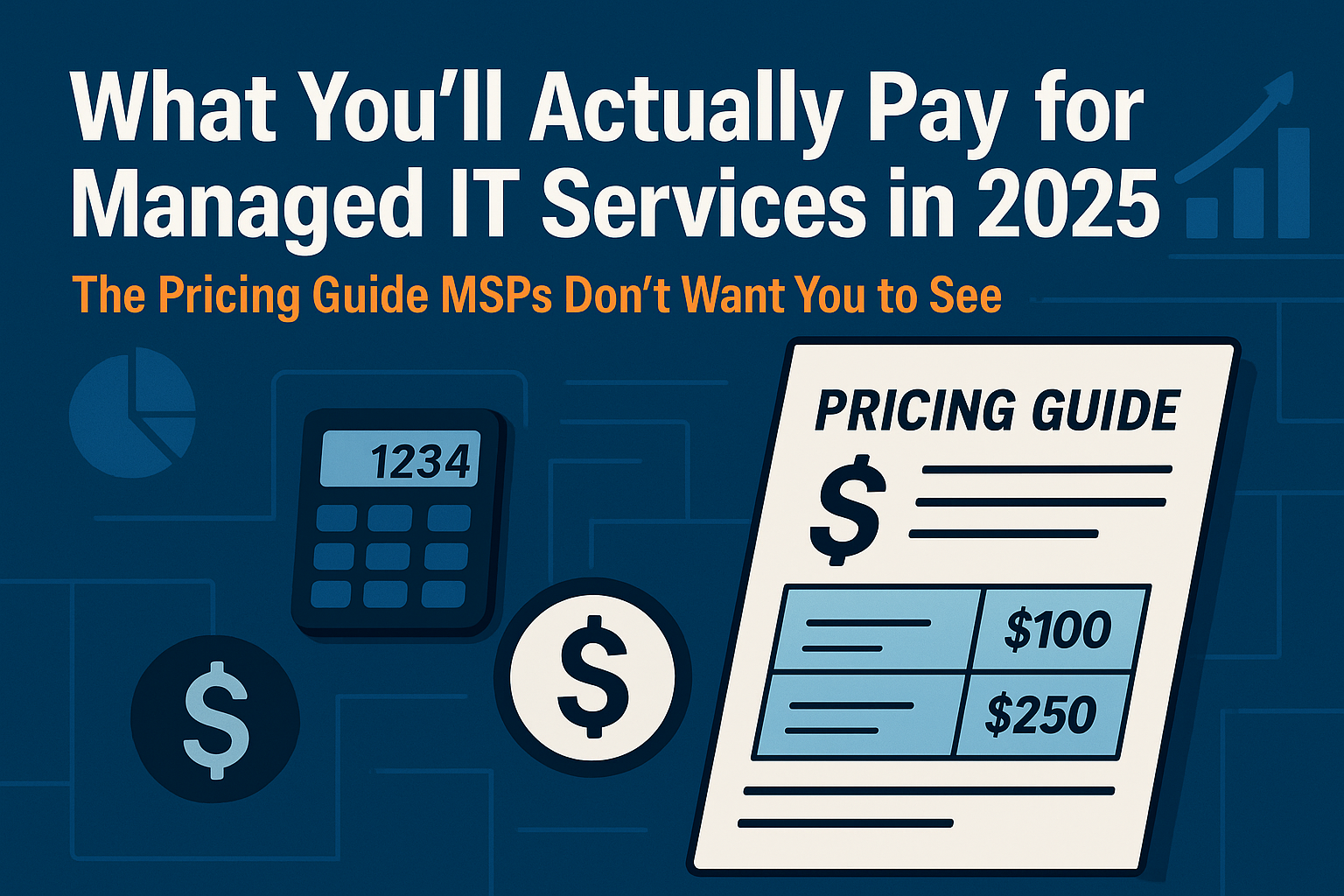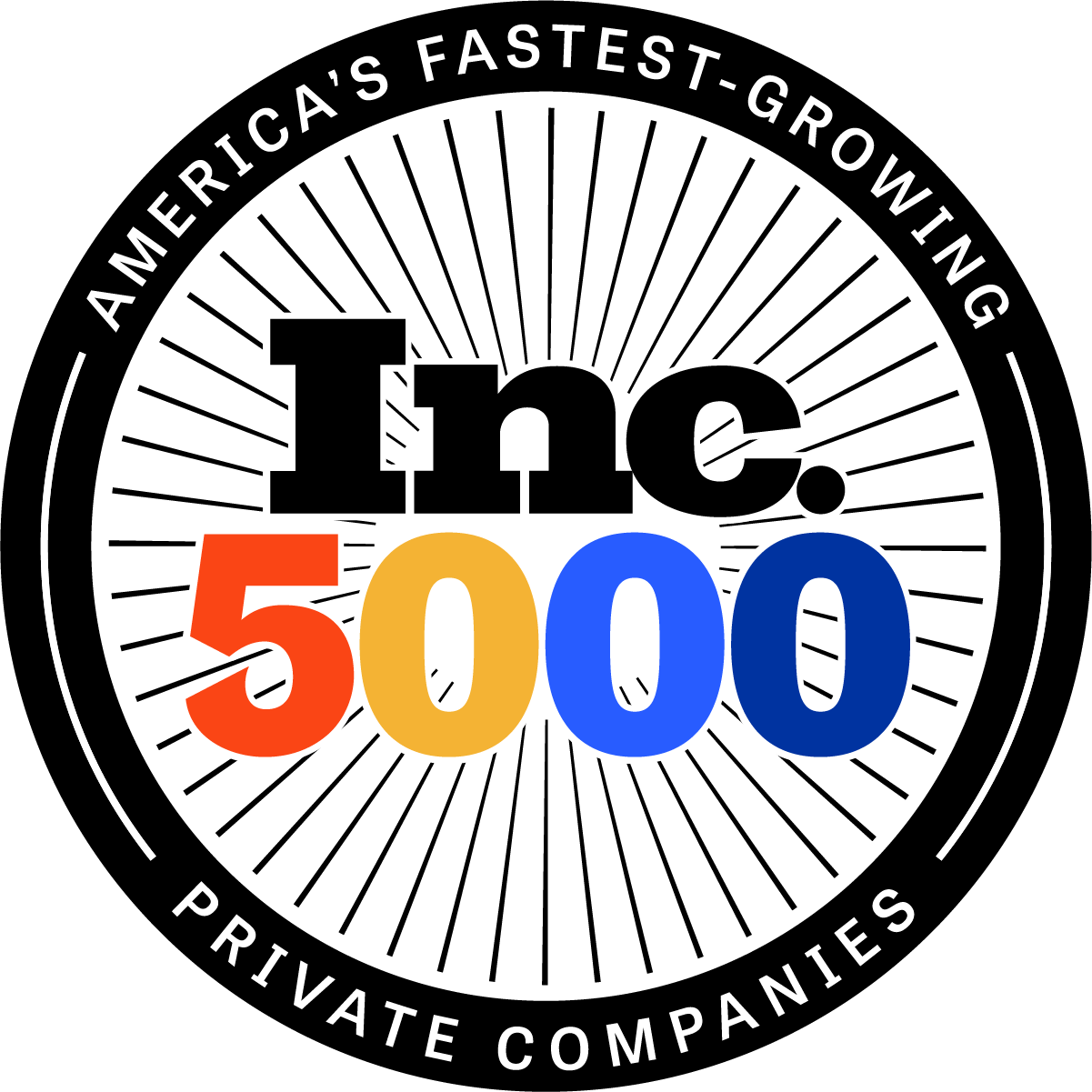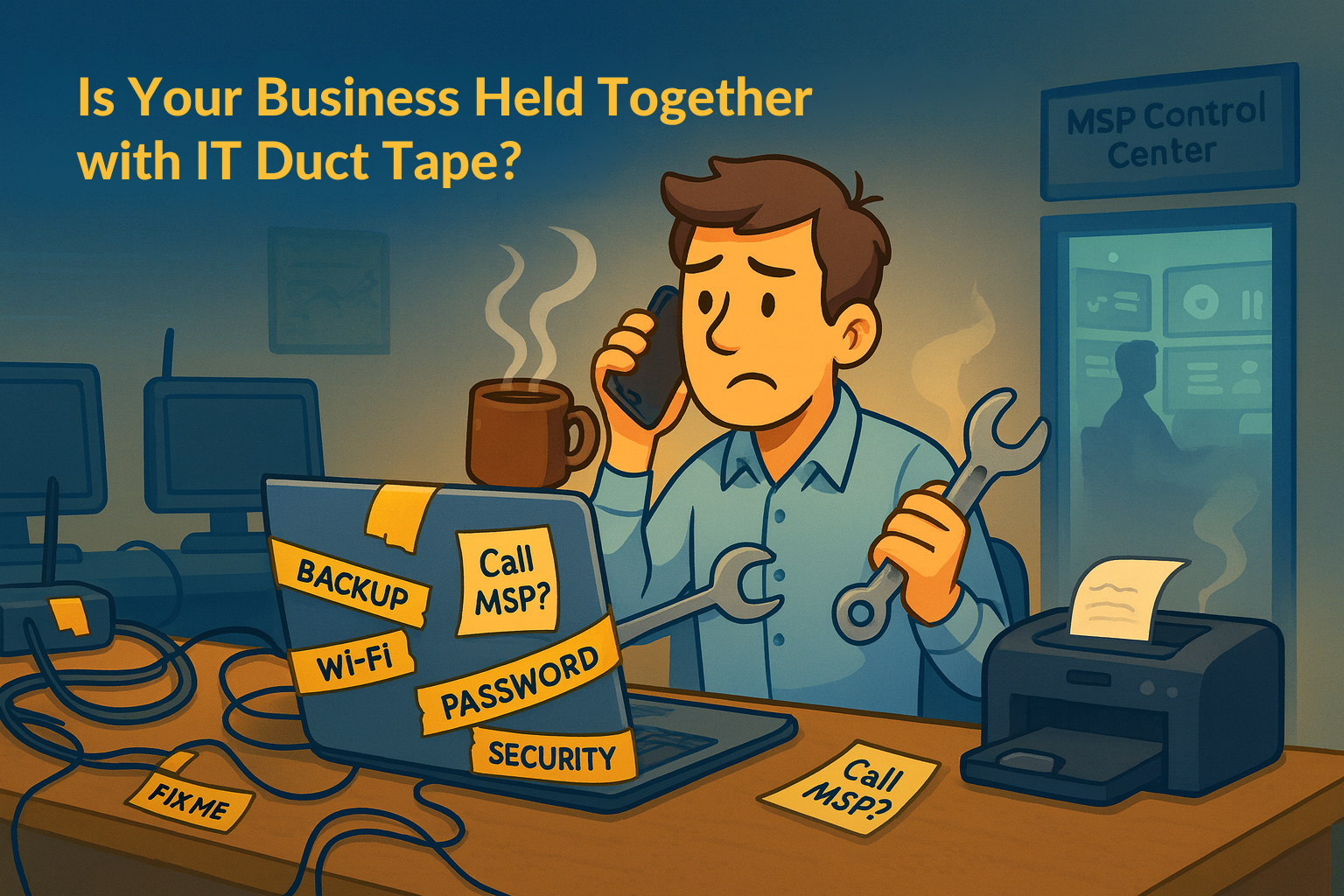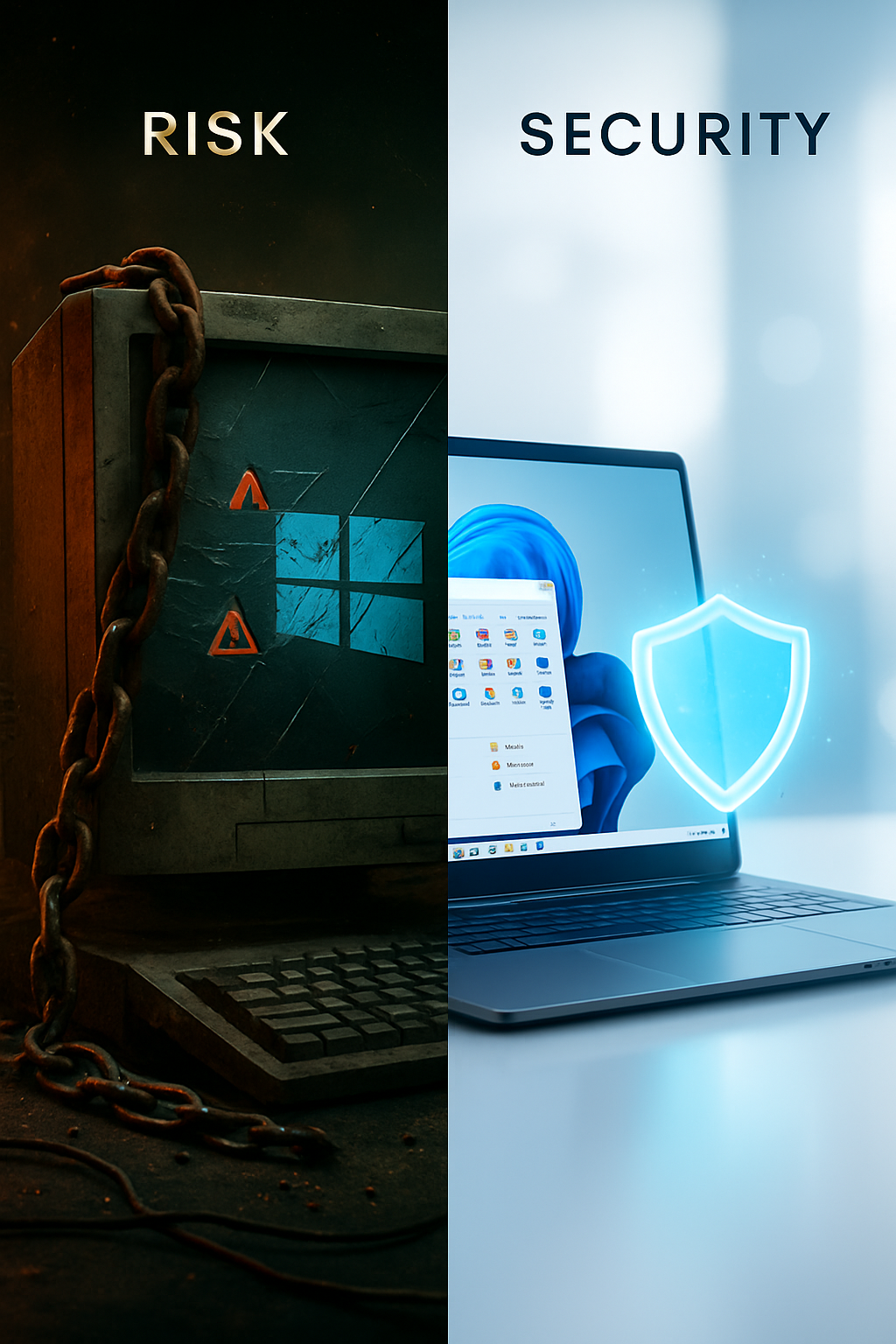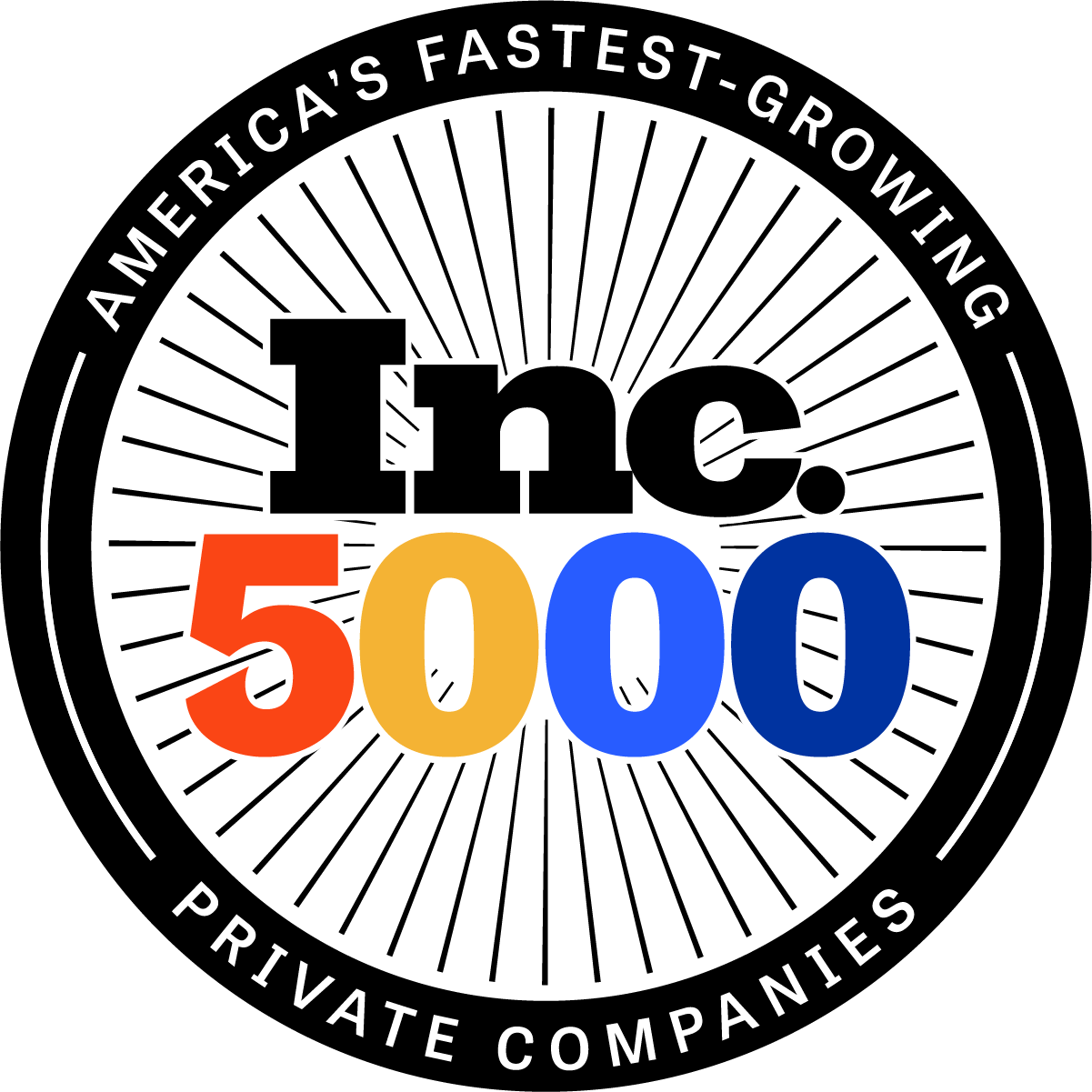Halloween-Themed Phishing Scams: Tricks in Disguise
Halloween-Themed Phishing Scams: Tricks in Disguise
A Strategic White Paper on Seasonal Cybersecurity Threats
Prepared by AllTech IT Solutions
Executive Summary
In the shadowy realm of cybersecurity, October brings more than just ghosts and goblins—it unleashes a parade of digital demons masquerading as innocent Halloween festivities. Like ravens gathering before a storm, cybercriminals flock to seasonal opportunities, weaving their malicious spells through costume promotions, party invitations, and trick-or-treat campaigns that would make any gothic tale proud.
Recent data from the Federal Bureau of Investigation reveals that seasonal phishing attacks spike by 70% during October, with Halloween-themed campaigns representing the fastest-growing category of social engineering attacks (FBI Internet Crime Complaint Center). Meanwhile, cybersecurity firm Proofpoint documented a staggering 40% increase in Halloween-related malicious emails between 2022 and 2023, establishing October as the second-most dangerous month for phishing attacks, trailing only the December holiday season (Proofpoint Threat Report 2024).
These aren't mere pranks played by digital tricksters. These campaigns represent sophisticated psychological manipulation, exploiting our seasonal enthusiasm to bypass the very security awareness we've carefully cultivated. Like a beautifully crafted jack-o'-lantern hiding something sinister within, these attacks wear the cheerful mask of celebration while concealing data theft, ransomware deployment, and credential harvesting beneath their festive exterior.
The stakes are ghoulishly high. Organizations face an average of $4.45 million in damages from successful phishing attacks, according to IBM's Cost of a Data Breach Report 2023. When these attacks arrive dressed in Halloween costumes, detection rates plummet by 35%, creating a perfect storm of vulnerability that cybercriminals exploit with frightening efficiency.
The Haunting Reality: Why Halloween Phishing Thrives
The Psychology of Seasonal Vulnerability
October transforms our digital landscape into something resembling a macabre carnival. The same psychological mechanisms that make Halloween enchanting—our willingness to suspend disbelief, embrace the unusual, and engage with the unexpected—become weapons in the hands of cybercriminals. Like a master puppeteer pulling strings from the shadows, attackers understand that seasonal content bypasses our rational defenses.
Consider the anatomy of a successful Halloween phishing campaign. The victim receives an email featuring a beautifully designed costume contest invitation, complete with corporate branding and what appears to be legitimate sender information. The imagery is festive, the tone is celebratory, and the call-to-action feels perfectly reasonable—"Click here to submit your costume photo and win a $500 prize!"
But beneath this cheerful veneer lurks something far more sinister. The link leads to a credential harvesting page that mirrors the organization's login portal with disturbing accuracy. Within minutes of clicking, the victim has unknowingly handed their credentials to attackers who now possess the keys to corporate systems, customer data, and financial resources.
The Expanding Arsenal of October Deceptions
Modern Halloween phishing campaigns have evolved far beyond crude email blasts. Today's attackers craft multi-channel experiences that span email, social media, SMS, and even voice calls. They create elaborate fictional narratives around costume contests, Halloween party planning, seasonal promotions, and community events. Each touchpoint reinforces the legitimacy of their deception, building trust through repetition and apparent authenticity.
We're witnessing attackers leverage artificial intelligence to generate hyper-realistic seasonal content, from personalized costume recommendations to fake event pages that mirror legitimate community gatherings. These campaigns often run for weeks before the actual attack, building relationships and establishing credibility with targets through seemingly innocent Halloween-themed interactions.
The sophistication is genuinely chilling. Attackers now research individual targets' social media profiles to craft personalized Halloween content. An employee who posts about their children's costumes might receive a phishing email about a "school Halloween photo contest." Someone who shares pictures of elaborate home decorations could be targeted with malicious links disguised as "neighborhood decoration competitions."
Dissecting the Digital Crypt: Common Halloween Attack Vectors
The Masquerade of Costume Commerce
Fake costume retailer websites represent one of the most prevalent Halloween attack vectors. These sites appear during late September and vanish after Halloween, but their brief existence creates substantial damage. They capture payment card information, personal details, and shipping addresses while delivering nothing but digital nightmares to their victims.
These malicious sites often rank highly in search results through black-hat SEO techniques, appearing legitimate enough to fool even cautious shoppers. They feature stolen product images, fabricated customer reviews, and professionally designed interfaces that mirror legitimate e-commerce platforms. The only clue to their malicious nature lies in careful examination of payment processes and domain registration details—analysis that most consumers never perform.
Social Media Specters
Social platforms become hunting grounds during October, with attackers creating fake Halloween event pages, costume contests, and seasonal promotions. These campaigns spread through social sharing, creating viral distribution mechanisms that traditional email filters cannot intercept.
The psychological impact of social proof makes these attacks particularly effective. When colleagues share Halloween content that appears to originate from trusted sources, recipients experience significantly reduced suspicion. A malicious costume contest shared by five coworkers carries the implicit endorsement of the entire team, making click-through rates soar to dangerous levels.
The Phantom of Fake Festivities
Corporate Halloween events become prime targets for sophisticated spear-phishing campaigns. Attackers research company social media pages, employee LinkedIn profiles, and public announcements to craft believable event-related communications. They send emails about costume contest submissions, party venue changes, or special Halloween bonuses that require immediate action through malicious links.
These attacks succeed because they exploit legitimate business processes during a time when security awareness naturally relaxes. Employees expect increased communication about Halloween events, making malicious messages blend seamlessly with legitimate organizational communications.
The AllTech Framework: Architecting Defense Against Digital Demons
Layer 1: Intelligent Email Protection
Our AllTech User Protection Suite provides the foundation for Halloween threat defense through advanced email security that adapts to seasonal attack patterns. The system employs machine learning algorithms trained to recognize Halloween-themed social engineering techniques, automatically flagging suspicious seasonal content before it reaches user inboxes.
Real-time email banner warnings provide immediate visual cues when messages originate from external sources or contain suspicious seasonal keywords. When an employee receives an email about a "Halloween costume contest," dynamic banners instantly identify whether the message comes from internal HR systems or potentially malicious external sources. This creates teaching moments that reinforce security awareness without disrupting legitimate communication.
The system's behavioral analysis capabilities detect anomalous sending patterns associated with Halloween campaigns. When bulk emails about seasonal events originate from compromised accounts or suspicious domains, our platform intervenes automatically, quarantining threats before they can spread through the organization.
Layer 2: User Awareness Reinforcement
Through our AllTech User Protection Suite, we deploy targeted security awareness training that specifically addresses Halloween-themed threats. Interactive modules delivered throughout October educate employees about seasonal attack vectors while maintaining engagement through relevant, timely content.
Simulated Halloween phishing campaigns provide controlled exposure to realistic seasonal threats. Employees receive carefully crafted test emails featuring costume contests, party invitations, and seasonal promotions that mirror actual attack patterns. Those who click receive immediate educational feedback, while successful identification of threats reinforces positive security behaviors.
Our dark web monitoring capabilities become particularly valuable during Halloween season, as attackers often sell stolen credentials and personal information through underground markets themed around seasonal events. When employee credentials appear in Halloween-related data breaches or underground sales, our system provides immediate alerts with specific remediation guidance.
Layer 3: Advanced Threat Detection
The AllTech Endpoint Pro Suite employs behavioral analysis specifically tuned to detect Halloween-themed attack patterns. When users download files from suspicious seasonal websites or execute potentially malicious Halloween-related applications, our system intervenes in real-time.
Our Security Operations Center maintains heightened vigilance during October, with analysts specifically trained to recognize seasonal attack signatures. This human expertise combined with automated detection creates a comprehensive defense mechanism that adapts to evolving Halloween threat landscapes.
Network traffic analysis identifies communication with known malicious Halloween-themed domains and command-and-control infrastructure. When endpoints attempt to connect to suspicious seasonal websites or download content from flagged sources, our system blocks the communication while alerting security teams to investigate further.
Layer 4: Secure Communication and Collaboration
The AllTech Secure File Share platform provides controlled environments for legitimate Halloween content sharing within organizations. When departments need to distribute costume contest materials, party planning documents, or seasonal announcements, our secure platform ensures these communications cannot be spoofed or intercepted by attackers.
Role-based access controls prevent unauthorized parties from accessing Halloween event planning materials that could be used for social engineering attacks. When legitimate seasonal content is shared through secure channels, employees develop recognition patterns that help them identify suspicious external communications.
Layer 5: Comprehensive Backup and Recovery
Our AllTech Business Continuity Suite provides essential protection against Halloween-themed ransomware attacks that often coincide with seasonal phishing campaigns. When employees inadvertently install malicious Halloween applications or visit compromised seasonal websites, our immutable backup systems ensure rapid recovery without paying ransom demands.
The platform's ransomware detection capabilities identify Halloween-themed attack patterns, including seasonal file encryption signatures and malicious processes that often accompany October cybercrime campaigns. This early detection enables isolation and recovery before attacks can spread throughout organizational networks.
Measuring Defense Effectiveness: The Tangible Outcomes
Reduced Risk Through Proactive Detection
Organizations implementing our comprehensive Halloween threat defense typically experience a 75% reduction in successful seasonal phishing attacks within the first October of deployment. The combination of automated detection, user education, and real-time intervention creates a defensive ecosystem that adapts to emerging Halloween threat patterns.
Our metrics demonstrate that employees who receive targeted Halloween security awareness training show 60% better recognition rates for seasonal social engineering attempts compared to those with generic phishing education. This improvement translates directly into reduced click-through rates on malicious Halloween content and faster reporting of suspicious seasonal communications.
Enhanced Productivity Through Streamlined Security
Rather than disrupting Halloween festivities, our security framework enhances legitimate seasonal activities by providing trusted channels for organizational celebrations. Companies report 40% faster approval processes for Halloween event communications when using our secure collaboration platforms, as security teams can confidently validate content authenticity.
The automated nature of our threat detection reduces IT workload during October, freeing technical staff to focus on strategic initiatives rather than reactive incident response. Organizations typically see 50% fewer Halloween-related security incidents requiring manual intervention when our comprehensive suite is properly implemented.
Fortified Compliance Through Comprehensive Documentation
Our platform generates detailed audit trails of all Halloween-related security activities, from phishing simulation results to threat detection logs. This documentation proves invaluable during compliance audits, particularly for organizations in regulated industries where seasonal security awareness must be demonstrably effective.
The system's reporting capabilities provide clear metrics on Halloween threat exposure, employee training effectiveness, and incident response performance. These insights enable continuous improvement of seasonal security programs while providing evidence of due diligence to auditors, insurance providers, and regulatory bodies.
Business Resilience Through Adaptive Defense
Organizations implementing our Halloween-specific security measures develop resilience that extends beyond seasonal threats. The same awareness techniques that protect against costume contest phishing prove effective against Black Friday scams, holiday bonus fraud, and other seasonal social engineering campaigns.
Our comprehensive approach builds organizational security culture that recognizes the seasonal nature of cyber threats. Employees trained to identify Halloween-themed attacks develop enhanced general security awareness that improves year-round threat detection and response capabilities.
The Strategic Path Forward: Embracing Proactive Halloween Security
As we venture deeper into the digital age, Halloween-themed cybersecurity threats will only grow more sophisticated and more dangerous. The convergence of artificial intelligence, social media manipulation, and seasonal psychology creates attack opportunities that traditional security measures cannot adequately address.
Organizations that treat Halloween security as an afterthought—or worse, as a mere seasonal inconvenience—expose themselves to threats that can transform October celebrations into year-long nightmares of data recovery, regulatory investigation, and customer trust rebuilding. The time for reactive security approaches has passed, replaced by the urgent need for proactive, comprehensive defense strategies that acknowledge the unique risks posed by seasonal social engineering.
The path forward requires embracing security solutions that understand the psychological dimensions of Halloween threats while providing the technical capabilities needed to detect and neutralize sophisticated seasonal attacks. This means implementing platforms that combine automated threat detection with human expertise, user education with real-time protection, and incident response with continuous monitoring.
Organizations that successfully navigate Halloween's digital dangers will find themselves better prepared for all forms of seasonal cybercrime. The security awareness and technical capabilities developed to combat October threats create defensive foundations that protect against holiday shopping scams, tax season fraud, and other time-sensitive social engineering campaigns that punctuate the cybersecurity calendar.
The choice is stark: Embrace comprehensive Halloween security now, or risk discovering that your organization's greatest vulnerability was hiding behind a cheerful jack-o'-lantern smile.
About AllTech IT Solutions
AllTech is a leading provider of integrated IT management and cybersecurity solutions. We partner with businesses to transform their technology from a liability into a strategic asset, delivering robust security, operational efficiency, and a clear path to compliance. Our expert team leverages best-in-class platforms to build proactive and resilient technology environments.
Take the Next Step
Ready to fortify your defenses and turn your security posture into a competitive advantage? See how AllTech's strategic approach can be tailored to your unique business challenges.
Contact our cybersecurity strategists today for a complimentary security consultation.
Email: Sales@AllTechSupport.com
Phone: 205-290-0215
Web: AllTechSupport.com
Works Cited
FBI Internet Crime Complaint Center. "2023 Internet Crime Report: Seasonal Phishing Trends." Federal Bureau of Investigation, 2024, www.ic3.gov/Media/PDF/AnnualReport/2023_IC3Report.pdf.
IBM Security. "Cost of a Data Breach Report 2023." IBM Corporation, 2023, www.ibm.com/reports/data-breach.
Proofpoint. "2024 State of the Phish: Annual Phishing and Email Security Report." Proofpoint Inc., 2024, www.proofpoint.com/us/threat-reference/phishing.



